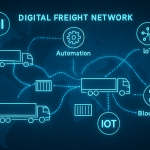Numerous methods exist for converting images into text, a task essential for various activities such as completing assignments and drafting reports. In today’s fast-paced world, choosing a method that is both straightforward and accurate is key. The recommendation here is to use an AI-based image to text converter, which stands out for its decision-making efficiency and rapid data extraction capabilities.
Insight into Image to Text Converters
These converters are tools that enable machines to interpret and understand visual data.
Mechanism of Converters
This process, which identifies and extracts characters, unfolds in three distinct stages:
- Preprocessing Stage: OCR technology enhances character recognition, focusing on the readability and clarity of the image. It effectively removes any distortions or unnecessary marks to ensure clearer text visibility.
- Extraction Stage: Post-recognition, the system matches the characters against its internal database. Gradually, it becomes more proficient in comprehending this data. The text is then simplified to facilitate easier recognition and subsequent extraction.
- Postprocessing Stage: This final phase involves bespoke approaches. Depending on its intended use, a tool might integrate a grammar checker or other specific functionalities.
Application Areas of Image to Text Tools
OCR technology, a prime example of image to text conversion, finds extensive use in several fields. For instance, in passport and ID card verification, it’s crucial for automated systems, particularly in enhancing security and expediting data entry processes. This technology’s effectiveness is evident in settings like airport immigration centers, where it swiftly extracts vital details from passports for smoother traveler processing.
In the commercial domain, OCR has transformed purchasing methods, especially in facilitating online transactions. It does so by quickly scanning banking details, such as account numbers and IBANs, which is especially useful for international purchases. This not only makes transactions more efficient but also adds a layer of convenience for consumers, eliminating the need for manually inputting long banking details.
Moreover, in the marketing industry, OCR serves as a potent tool for brands looking to increase their market presence and connect more effectively with their customers. The technology is crucial for gathering and analyzing information. This data is then used by companies to shape their marketing strategies in a way that matches what their customers like and how they behave.
Three Straightforward Steps for Conversion Converting images to text involves a simple three-step process:
1. Image Upload or Paste:
The initial step involves introducing the image into the conversion tool. One can either upload the image file directly from their device or simply paste the link to an image that is available online. This stage sets the foundation for the text extraction process.
2. Text Extraction:
Once the image is in the system, the next step is to begin the text extraction. This is typically done through a clearly labeled button such as ‘Extract’ or ‘Convert’. Upon activation, the OCR technology within the tool analyzes the image, identifying and interpreting the text within. This stage showcases the sophistication of the algorithms in accurately extracting the textual content.
3. Downloading or Saving the Extracted Text:
After the extraction, the final step is to obtain the extracted text. The text, usually in an editable format, allows for any necessary edits or corrections. It can then be downloaded or saved in a preferred format, such as a text file or a document, marking the completion of the image to text conversion process.
Summary
Image to text tools, with their reliance on OCR technology, are extensively employed across various sectors due to their precision and efficiency. These tools are indispensable in automated systems for document verification, like those found in airport immigration centers, where they expedite entry processes by swiftly scanning and extracting key document information. In commerce, they simplify online transactions by scanning banking details, thereby enhancing transactional efficiency and user convenience. In the realm of marketing, these tools enable brands to better understand and engage with their customers through data analysis. These diverse applications highlight the significant role and versatility of image to text conversion tools in contemporary life.
Lynn Martelli is an editor at Readability. She received her MFA in Creative Writing from Antioch University and has worked as an editor for over 10 years. Lynn has edited a wide variety of books, including fiction, non-fiction, memoirs, and more. In her free time, Lynn enjoys reading, writing, and spending time with her family and friends.















